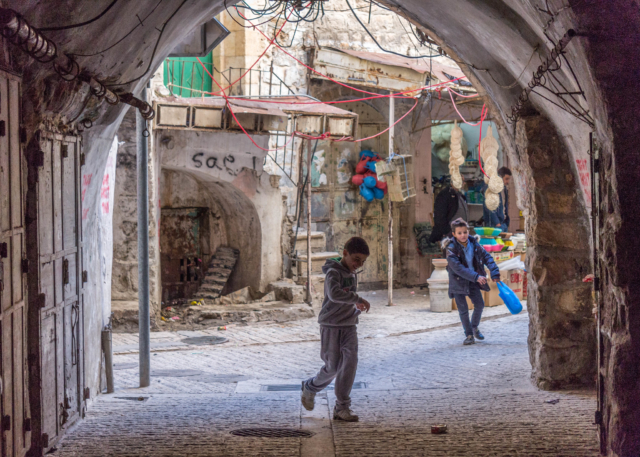The Impact of COVID-19 on Poverty in the Palestinian Territories

The impact of COVID-19 on poverty in the Palestinian territories has been extensive. COVID-19 devastated the previously struggling economies of the West Bank and Gaza Strip. In the last quarter of 2019, the Gaza Strip had a 43% unemployment rate while the West Bank had a 14% unemployment rate. Moreover, the recent conflict between Hamas and Israel, lasting from May 10, 2021, to May 21, 2021, further disrupted the Palestinian economy.
COVID-19 in the West Bank and Gaza Strip
In March 2020, the Palestinian Authority (PA) identified the first cases of coronavirus in the Palestinian territories. Surges in cases since August 2020 have resulted in intermittent lockdowns and stressed an already burdened Palestinian healthcare system. The Palestinian healthcare system’s already limited capacity and dearth of specialized medical care workers means the Palestinian territories have an insufficient ability to handle large influxes of COVID-19 patients. Also, Israeli-implemented movement restrictions between the Palestinian territories and Israel have constrained Palestinian efforts to combat COVID-19 by delaying the Palestinian territories’ acquisition of necessary medical equipment.
As of June 2, 2021, the vaccination campaign across the Palestinian territories has vaccinated 344,260 Palestinians in the West Bank and Gaza Strip or 7% of the population. Thus far, COVAX has heavily supported the Palestinian vaccination effort and aims to vaccinate 20% of the Palestinian population.
State of the Palestinian Economy
Coronavirus-induced social distancing and lockdown measures have further weakened the fragile Palestinian economy. Even before COVID-19, political instability, periods of violence and Israeli restrictions on human and material movement in and out of the Gaza Strip were already causing a state of humanitarian emergency in the Gaza Strip. In the West Bank, the PA’s suspension of coordination with Israel between May 2020 and November 2020 intensified the impact of COVID-19 on poverty. The suspension led Israel to suspend tax transfers to the PA, which account for the majority of the PA’s budget.
Due to the health and socioeconomic crisis, the Gaza Strip’s unemployment rate jumped to 49% by the end of 2020. Likewise, the pandemic has caused wages to decline by 50% or more in nearly 40% of West Bank households. In the West Bank, the pandemic and tax revenue crisis caused the PA, the territory’s largest employer, to cut its staff’s pay in half.
The pandemic also intensified Gazan food insecurity. The United Nations Relief and Works Agency for Palestine Refugees in the Near East (UNRWA) reported that “food expenditure declined in 40% of surveyed households in Gaza once lockdowns went into effect.” As of early 2021, 68% of Gazans were food insecure.
Altogether, the impact of COVID-19 on poverty in the Palestinian territories has been drastic as experts project the pandemic will push many households below the poverty line. Specifically, estimates indicated the proportion of Gazan households living in poverty would jump from 53% in 2019 to 64% by the end of 2020 and the proportion of West Bank households living in poverty would rise from 14% to 30% in the same period.
Israel-Hamas Conflict
The May 2021 conflict between Israel and Hamas worsened already dire living conditions in the Gaza Strip and may increase COVID-19 cases in the territory. The conflict damaged 57 Gazan educational facilities and 29 Gazan health facilities. Moreover, the conflict damaged the Gaza Strip’s water, sanitation and hygiene infrastructure, which serves 1.2 million people.
When the conflict caused the number of Gazan internally displaced persons to temporarily spike to 77,000, the United Nations Children’s Fund (UNICEF) raised concern that the displacement may spread COVID-19. Following the conflict, positive cases in the Gaza Strip increased and now account for 84% of all COVID-19 cases in the Palestinian territories.
Renewal of US Aid to the Palestinian Territories
The impact of COVID-19 on poverty in the Palestinian territories has been stark. However, the Biden administration recently ended a nearly three-year U.S. hiatus on aid to Palestinians. On April 7, 2021, Secretary of State Antony Blinken announced an aid pledge promising $275 million. The pledge dedicates $150 million to fund UNRWA, which serves nearly six million Palestinians across the Middle East.
The Biden administration earmarked another $15 million to aid the Palestinian response to COVID-19 and provide food assistance. Furthermore, the aid plan will provide the U.S. Agency for International Development (USAID) with $75 million to fund economic and development assistance projects and $10 million to fund peace-building programs. USAID will use more than half of the $75 million to improve access to water and sanitation and upgrade Palestinian infrastructure.
During Secretary Blinken’s visit to Ramallah, he announced another $112 million of aid to Palestinians. Specifically, the U.S. will provide another $32 million to fund UNRWA. The pledge will also provide another $75 million in economic and development assistance to Palestinians in the West Bank and the Gaza Strip and $5.5 million in immediate assistance to the Gaza Strip. During the visit, Secretary Blinken also outlined the United States’s goal to procure 1.5 million COVID-19 vaccines for Palestinians.
Future Outlook
While the U.S. only recently announced its Palestinian territories aid plan, the pledge will contribute to combating COVID-19 and provides a hopeful outlook for reversing the impact of COVID-19 on poverty in the Palestinian territories. Additionally, international efforts to procure vaccines and support COVAX have the potential to increase Palestinian access to COVID-19 vaccinations.
– Zachary Fesen
Photo: Flickr
